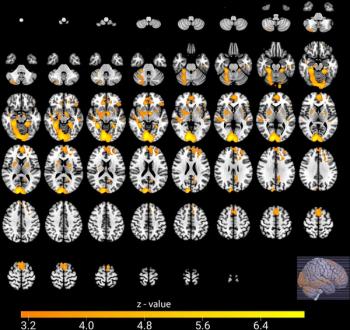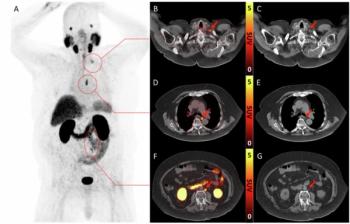
Brain anisotropy drives reading skills
MR imaging studies in adults and middle school children have underscored a link between the connectivity of brain white matter fibers and the ability to read. New diffusion tensor imaging data from Canadian researchers prove this relationship can be found much earlier in life than previously thought.
MR imaging studies in adults and middle school children have underscored a link between the connectivity of brain white matter fibers and the ability to read. New diffusion tensor imaging data from Canadian researchers prove this relationship can be found much earlier in life than previously thought.
Earlier research unearthed a correlation between DTI measures of white matter anisotropy in the brain's left hemisphere and reading scores from normal and impaired adults. Data from 11-year-olds show a similar correlation between anisotropy of the same brain region and reading scores in either poor, normal, or advanced readers.
These findings suggest that the degree of functional connectivity between brain regions influences reading performance, said principal investigator Dr. Christian Beaulieu, an assistant professor of biomedical engineering at the University of Alberta. He sought to determine whether similar correlations exist in younger children.
Beaulieu and colleagues assessed 47 healthy children ages five to 10. The researchers split the children into two groups based on education level: kindergarten to first grade (Kind-Gr1), and second to fourth grade (Gr2-4). The children underwent DTI on a 1.5T scanner along with a comprehensive cognitive assessment including reading skills and nonverbal intelligence.
The investigators found significant positive correlations between reading ability and left hemisphere fractional anisotropy, validating earlier findings on older subjects. The younger subjects (Kind-Gr1) showed significant correlations between reading skills and a greater extent of their brains, however, including the right hemisphere. Beaulieu presented his group's findings at the 2006 International Society for Magnetic Resonance in Medicine meeting.
Significant positive correlations occurred between clusters of voxels with fractional anisotropy in the centrum semiovale of the left hemisphere and Woodcock Word ID scores. Left centrum semiovale clusters of 219 and 177 voxels for Kind-Gr1 and Gr2-4 subjects, respectively, proved much larger than the 42-voxel cluster observed in older children. The investigators found the correlation coefficients in the individual clusters to be stronger in the Kind-Gr1 group.
The quantitative DTI tests provided evidence for a relationship between localized white matter connectivity in the brain and reading performance in elementary school children, the researchers said.
For more information from the Diagnostic Imaging archives:
Newsletter
Stay at the forefront of radiology with the Diagnostic Imaging newsletter, delivering the latest news, clinical insights, and imaging advancements for today’s radiologists.

























